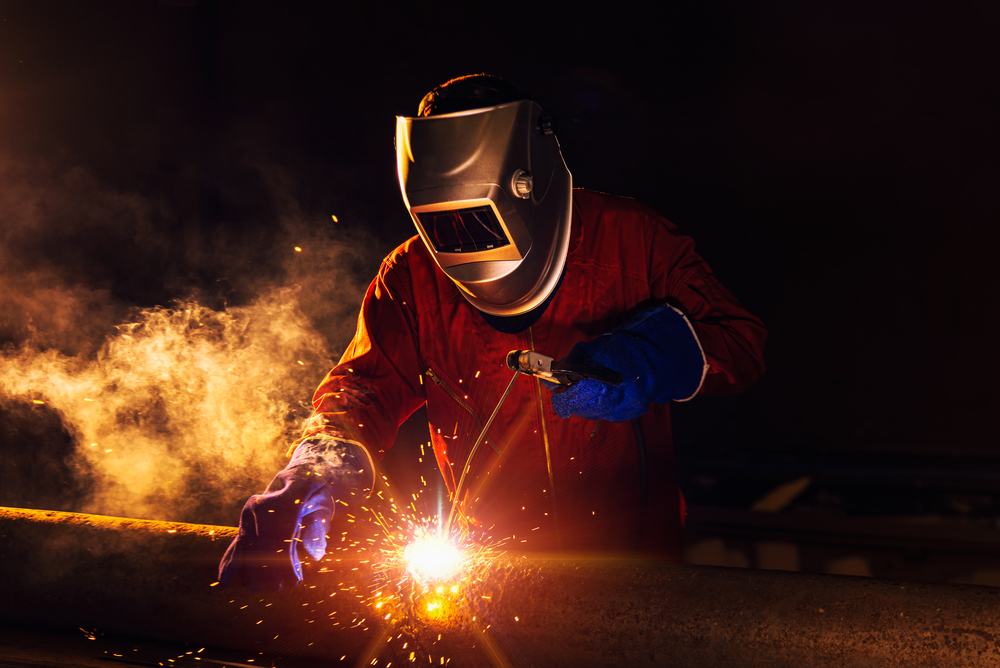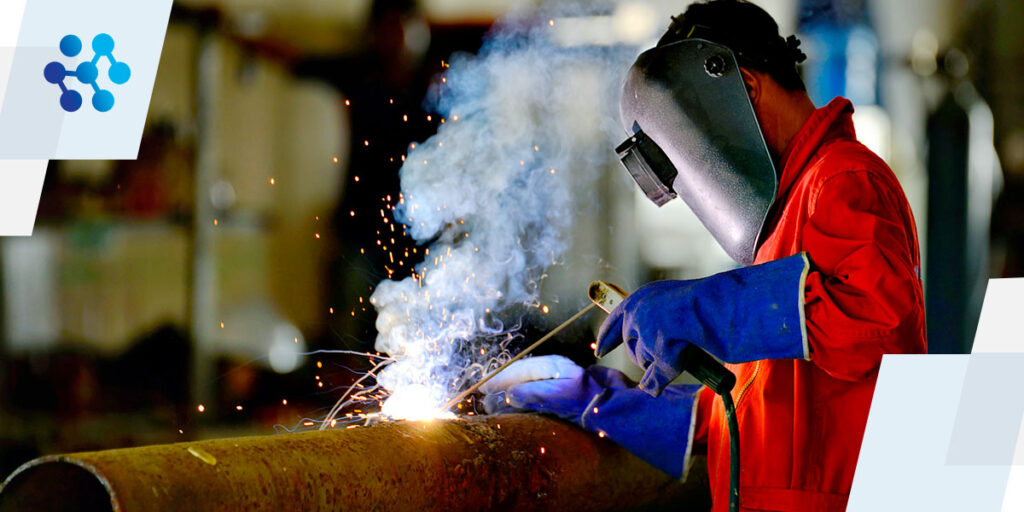How to achieve perfect fusion with Montana Mobile Welding and Repair Belgrade Fabrication
Common Welding Repair Issues and Just How to Address Them Effectively
Welding fixings typically come across a range of problems that can endanger the stability of the end product. Typical issues consist of inadequate penetration, porosity, and misalignment, among others. Each problem presents special obstacles that call for particular methods for resolution. Understanding these issues is important for welders intending to boost their abilities and results. This discussion will certainly discover these common welding fixing concerns and reliable methods to address them.
Inadequate Penetration
Poor infiltration happens when the weld steel fails to totally fuse with the base material, leading to weak joints and possible architectural failings. This problem usually stems from insufficient warm input, incorrect electrode angle, or improper welding speed. Welders might encounter insufficient penetration as a result of a mistake of the necessary specifications for a certain material thickness or kind. In addition, contamination on the base product's surface can prevent efficient bonding, exacerbating the trouble. To address inadequate infiltration, welders should guarantee suitable setups on their equipment and keep a tidy job surface area. Normal examination of welds is recommended to recognize any shortages early, enabling timely modifications and the avoidance of endangered architectural honesty in bonded assemblies.
Porosity
Porosity is an usual issue in bonded joints that manifests as little gas bubbles trapped within the weld steel. This defect can jeopardize the integrity of the weld, causing lowered stamina and possible failing under anxiety. Montana Mobile Welding and Repair Belgrade. Porosity generally develops from contamination, wetness, or incorrect welding strategies, which permit gases to get away right into the liquified weld pool. To address porosity, welders ought to guarantee correct surface area preparation, maintain a tidy working setting, and make use of appropriate welding specifications. Furthermore, selecting the best filler product and shielding gas can reduce gas entrapment. Normal assessment and testing of welds can assist recognize porosity early, ensuring timely corrective activities are taken, thus preserving the top quality and dependability of the welded framework
Misalignment
Imbalance in welding can develop from different aspects, consisting of incorrect arrangement and thermal expansion. Recognizing the origin is vital for efficient resolution. Numerous modification techniques are available to realign components and ensure architectural integrity.
Reasons for Misalignment
Welding imbalance often stems from a selection of underlying problems that can endanger architectural honesty. One main cause is incorrect fit-up of components prior to welding, which can lead to gaps and irregular surface areas. Variations in thermal growth during the welding process can likewise cause distortion, specifically if the materials being signed up with have various coefficients of expansion. Additionally, poor securing and fixturing may stop working to hold parts firmly in position, causing movement throughout welding. Improperly maintained devices, including welding equipments and devices, might present incongruities in the weld grain, more adding to misalignment. Driver error, stemming from insufficient training or experience, can additionally play a considerable function in producing misaligned welds.

Modification Strategies Available
Attending to misalignment properly calls for a mix of rehabilitative techniques customized to the certain concerns handy. One common technique is using jigs or fixtures to hold elements in the right setting throughout welding, guaranteeing consistent placement. Furthermore, preheating the materials can help decrease distortion and enhance fit-up. For considerable misalignment, mechanical adjustment methods, such as using hydraulic jacks or clamps, can be utilized to correct the placement prior to welding. Post-weld warmth treatment might likewise be required to soothe stress and anxieties caused by misalignment. Careful inspection and adjustment throughout the setup stage can avoid imbalance problems from coming to be substantial troubles, promoting a smoother welding procedure and enhancing overall architectural stability.
Distortion
Distortion is a common challenge in welding that can develop from different variables, including unequal cooling and heating. Comprehending the root causes of distortion is vital for applying reliable avoidance techniques. Resolving this problem not just enhances structural integrity but also boosts the general quality of the weld.
Sources of Distortion
When based on the intense warm of welding, materials typically undergo changes that can cause distortion. This sensation mainly emerges from thermal growth and tightening throughout the welding process. As the weld area warms up, the material expands; upon air conditioning, it gets, which can create inner stresses. In enhancement, irregular heating throughout a workpiece can intensify these stresses, leading to warping or bending. The sort of material also plays a significant role; metals with varying thermal conductivity and coefficients of expansion may react in a different way, causing uncertain distortions. Poor joint style and inadequate fixturing can contribute to imbalance during welding, enhancing the possibility of distortion. Comprehending these reasons is necessary for effective welding fixing and prevention strategies.
Prevention Techniques
Reliable avoidance methods for distortion throughout welding concentrate on managing warmth input and making sure correct joint style. Keeping a regular heat input aids to lessen thermal expansion and tightening, which can cause distortion. Making use of methods such as preheating the workpiece can additionally reduce the temperature level gradient, advertising uniform heating. Additionally, picking proper joint styles, such as T-joints or lap joints, can improve stability and decrease anxiety focus. Carrying out correct fixturing to secure the work surfaces in area better aids in keeping placement throughout the welding process. Staggered welding sequences can disperse warmth more equally, stopping localized distortion. By using these strategies, welders can considerably decrease the likelihood of distortion and boost the overall quality of their welds.
Breaking
Splitting is a typical concern run into in welding repair services, commonly resulting from various aspects such as incorrect cooling rates, material option, or insufficient joint preparation. The incident of fractures can greatly compromise the honesty of the weld, leading to potential failures during procedure. To resolve this problem, welders should first examine the root causes, guaranteeing that products work and properly chosen for the specific application. In addition, controlling the cooling rate throughout the welding process is essential; fast cooling can cause stress and anxiety and bring about fracturing. Appropriate joint layout and prep work additionally contribute to lessening the risk. Applying these methods can improve weld top quality and longevity, ultimately lowering the likelihood of fracturing in finished weldments.

Insufficient Fusion
A significant concern in welding fixings is incomplete fusion, which takes place when the weld steel does not adequately bond with the base material or previous weld passes - Montana Mobile Welding and Repair. This issue can cause weak points in the joint, possibly jeopardizing the honesty of the welded framework. Variables adding to insufficient blend consist of insufficient warmth input, inappropriate welding method, and contamination of the surfaces being signed up with. To address this concern efficiently, welders must ensure proper pre-weld cleaning and surface area preparation, along with readjust their welding criteria to accomplish ample infiltration and fusion. Routine inspection during the welding process can additionally assist determine incomplete fusion early, permitting timely rehabilitative actions to boost the overall quality of the weld
Overheating
While welding repairs can improve architectural stability, overheating offers a significant obstacle that can result in product destruction. Excessive warm during welding can modify the mechanical homes of steels, leading to decreased strength, boosted brittleness, and bending. This phenomenon is specifically essential in high-stress applications where structural reliability is paramount. Recognizing getting too hot can entail visual assessments for discoloration or distortion, as well as keeping an eye on temperature level during the welding procedure. To minimize the dangers connected with getting too hot, welders should utilize proper techniques, such as controlling heat input, adjusting travel speed, and using suitable filler materials. In addition, implementing pre- and post-weld heat therapies can assist recover material residential or commercial properties and boost the overall high quality of the fixing, guaranteeing long-lasting efficiency and security.
Frequently Asked Questions
What Are the Usual Indications of a Welding Flaw?

How Can I Evaluate My Welds for Quality?
To check welds for quality, one can utilize visual evaluations, ultrasonic testing, and radiographic methods. Each technique ensures architectural honesty, determines issues, and verifies adherence to specified standards, ultimately boosting the reliability of the bonded joints.
What Safety and security Safety Measures Should I Take While Welding?
When welding, one should prioritize security by putting on ideal individual protective equipment, ensuring correct ventilation, securing combustible materials away, maintaining a clean office, and understanding surroundings to stop crashes and injuries.
Can I Fix a Weld Without Renovating the Entire Joint?
Fixing a weld without remodeling the entire joint is possible, depending upon the damage (Fabrication). Techniques such as grinding, including filler material, or making use of a welding process can successfully address details defects while protecting the bordering framework
What Equipment Are Crucial for Reliable Welding Repairs?
Vital tools for effective welding repair services include a welding equipment, cable brush, grinder, protective gear, clamps, and filler products. Each device plays an essential role in making sure top quality and safety throughout the repair process. Porosity commonly emerges from contamination, dampness, or incorrect welding techniques, which enable gases to run away right into the molten weld pool. Inadequately conserved tools, consisting of welding equipments and tools, might present incongruities in the weld grain, more contributing to misalignment. When subjected to the intense warmth of electrode welding, materials usually undertake adjustments that can lead to distortion. Breaking is an usual issue come across in welding repairs, commonly resulting from numerous aspects such as incorrect cooling prices, material choice, or insufficient joint preparation. A considerable concern in welding repairs is incomplete blend, which happens when the weld steel does not appropriately bond with the base material or previous weld passes.